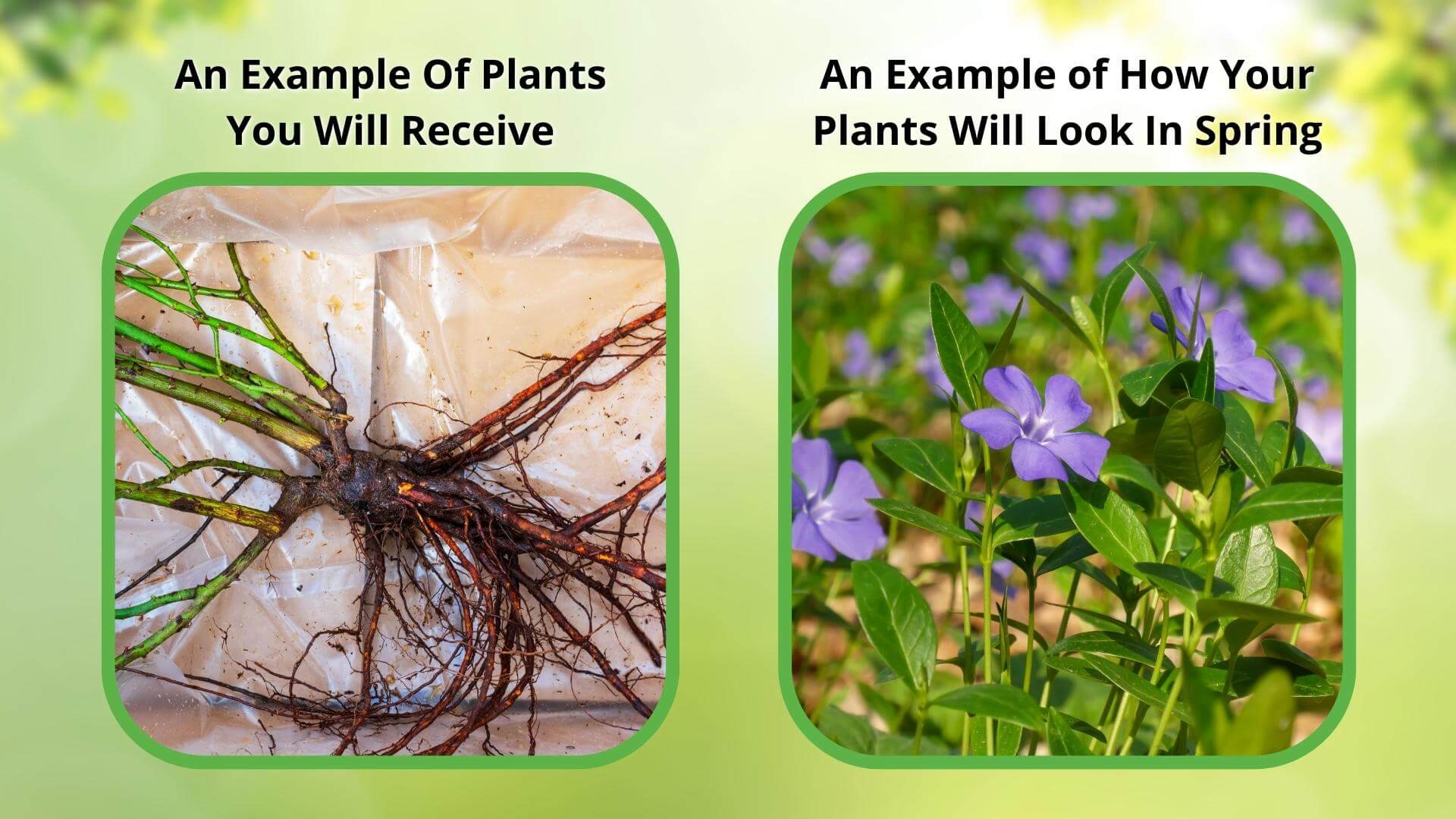Couldn't load pickup availability
🌸When you add 1 plant to cart, it automatically adds the free one
Climbing Wisteria offers cascades of fragrant blooms
One of the most enjoyable parts of coming across a Climbing Wisteria vine is how the fragrance is often noticed long before you even see the plant – and once you do, you will be shocked by its royal magnificence!
This vine is super easy to plant and maintain, and it can be trained to swiftly grow upwards and fill any type of structure. This vine is often found growing along pergolas, fencing, and extensive trellises.
Climbing Wisteria Plant Details | Growth, Height & Light Needs
Family: Fabaceae
Light Requirement: Full Sun - Partial Shade
Water Needs: Moderate
Height: 20-40 ft.
Spread: 10-30 ft.
Growth Rate: Fast
Bloom Time: Spring - Summer
Flower Color: Violet, Purple, Blue, Lavender
Wildlife Value: A pollinator favorite, excellent shelter for nesting birds
This vine will give a lot of bang for your buck. It grows to be an extremely large plant in a short amount of time just with a single plant. It is not picky with soil quality but does require healthy drainage and moderate soil moisture. Blooms come out in full force with full sun, but the plant can still tolerate some shade. The flowers, known as racemes, are up to one foot long. This plant is a type of legume, so the petals are reminiscent of sweet peas flowers.
Landscape Uses & How to Maintain Climbing Wisteria Vines
Climbing Wisteria produces twining shoots that are able to easily locate and wrap around any provided structure. To train into a specific shape, use loose ties to establish a new plant to grow along the structure. Once it takes off, very little maintenance is required. It can grow incredibly quickly and may require pruning to prevent any unwanted spread.
This can be prevented with regular monitoring and reshaping as needed. The flowers create a positively mesmerizing look for your garden. When grown along pergolas or fencing, the massive flowers hang as if they were hung up for decoration. The addictively fragrant flowers aren’t just a bonus of this vine, but are a true favorite among pollinators. You will regularly see butterflies, hummingbirds, and honeybees visiting this gorgeous nectar powerhouse during the summer.
Unique Traits of Climbing Wisteria | Pollinator-Friendly & Fast-Growing
Gardens with this vine will notice the providence of its beauty for decades to come. There are no large, dangling, royal flowers quite like it, so expect this plant to become a true focal point in your landscape. Shop for Climbing Wisteria online at TN Nursery.
This Is How Your Plants Will Look upon Delivery

Bloom Season
Spring
Bloom/Foliage Color
Purple
Height at Maturity
Over 12"
Care
Wisteria vines thrive in well-draining soil with regular watering. Prune them in late winter to early spring to encourage flowering and control growth. Be patient, as they can take a few years to bloom. Support with a sturdy trellis or arbor.
Plant Reproduction
Wisteria Vine spreads through seeds, stolons, and vegetative rhizomes
How to Grow and Care for Bare Root Vines
Bare root vines arrive dormant, making them easy to plant and transport during cooler months. To grow them successfully, soak the roots in water for 3–6 hours before planting to rehydrate them. Choose a location with the right light exposure—most flowering or fruiting vines prefer full sun—and install a trellis, arbor, or support structure before planting.
Dig a hole wide enough to spread out the roots and deep enough so the crown (where the roots meet the stem) sits just at or slightly above ground level. Backfill with loose, well-draining soil, firm it gently, and water thoroughly. Keep the soil evenly moist during the first growing season to help establish strong roots.
Mulch around the base to retain moisture and prevent weeds, being careful not to cover the crown. As the vine grows, guide new shoots onto the support structure. Prune lightly after the first season to shape and remove any dead growth. With proper care, bare root vines will quickly take off and provide beautiful vertical interest in your landscape.
Shipping date depends on the date displayed and chosen when you order from the product's page.
We only accept returns on plants verified dead. If you think your plants have died, we offer a 1 year warranty, please use use this File a Claim Link to verify dead plants and start with return warranty process.




Caring Tips
How do I care for my Climbing Wisteria?
Each box contains detailed care instructions and information about your product. But here's the basics.
Care Tips
Wisteria vines thrive in well-draining soil with regular watering. Prune them in late winter to early spring to encourage flowering and control growth. Be patient, as they can take a few years to bloom. Support with a sturdy trellis or arbor.
Light Requirements
Wisteria Vine thrives best in full sun to partial shade. It needs at least six hours of direct sunlight daily for optimal blooming. While it can tolerate some shade, too much can significantly reduce flowering, making sunlight crucial for vibrant growth.
Hardy Planting Zones
4 • 5 • 6 • 7 • 8 • 9
I am thrilled with my climbing wisteria purchase from TN Nursery. It has already covered part of my arbor and adds a touch of elegance to my yard.
TN Nursery provided me with a climbing wisteria that rooted immediately and continues to thrive. The foliage is lush, and I look forward to the blooms.
This climbing wisteria from TN Nursery is exactly what I wanted. It’s strong, fast-growing, and transforming my trellis into a beautiful display.
The climbing wisteria I purchased is healthy, vigorous, and climbing steadily. TN Nursery truly delivers high-quality plants at great value.
My climbing wisteria from TN Nursery arrived on time, packaged with care, and ready to thrive. It’s the best nursery experience I’ve had online.





